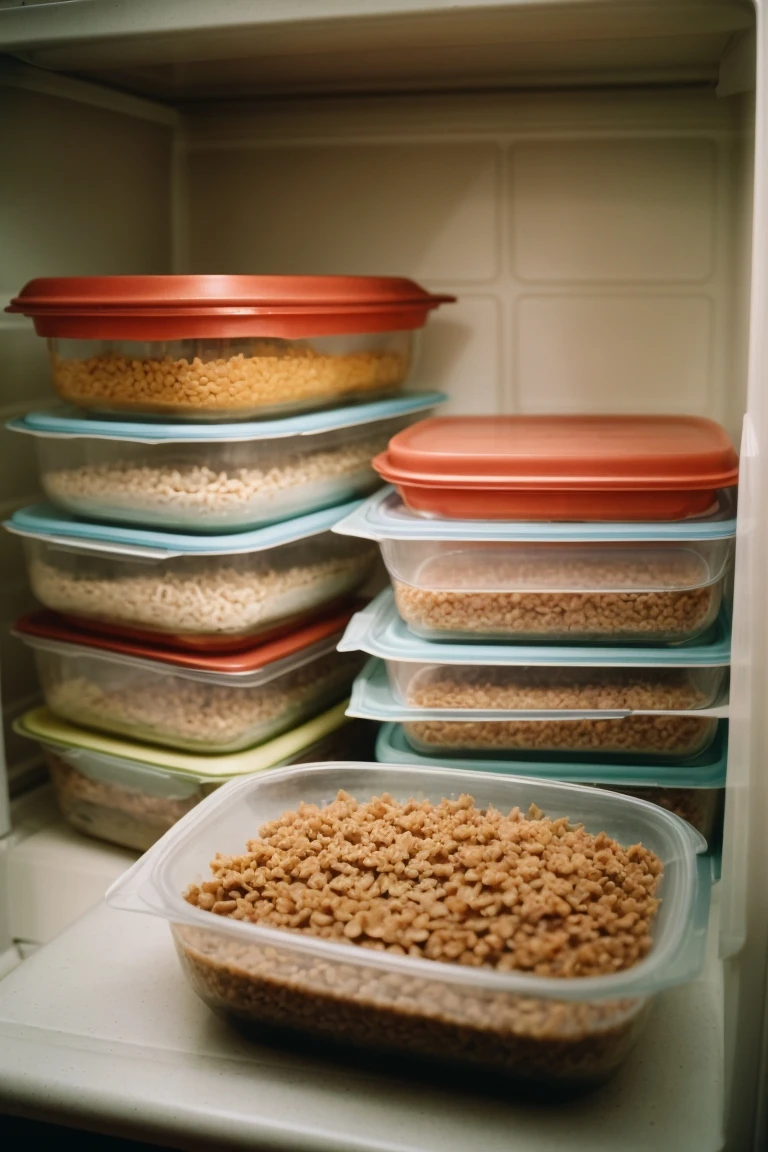Food Safety for Homemade Cat Food: A Must-Know Guide

Making your own cat food at home can be a great way to provide nutritious and fresh meals for your feline friend. However, proper food handling and preparation techniques are crucial when making homemade cat food in order to prevent foodborne illnesses. This guide covers key food safety tips and best practices when making DIY cat food at home.
Food Safety Basics
When preparing any type of food for your cat at home, there are some basic food safety guidelines you should follow:
- Wash hands thoroughly with soap and warm water before and after handling ingredients and food.
- Sanitize all work surfaces, bowls, and utensils before and after food preparation.
- Avoid cross-contamination by using separate cutting boards and knives for raw meat/fish and produce. Wash all utensils that touch raw ingredients before using again.
- Refrigerate or freeze perishable ingredients like raw meat, fish, eggs and dairy immediately.
- Cook animal protein ingredients like chicken, beef or fish thoroughly to safe internal temperatures.
- Let cooked food cool before refrigerating or freezing. Divide into individual portions in containers.
- When reheating food, heat it to 165°F or higher. Bring sauces, soups and gravy to a boil when reheating.
- Discard any leftovers after 3-5 days. Never use food that smells bad or is past its prime.
Following proper personal hygiene, avoiding cross-contamination, controlling temperatures and using ingredients before they spoil are the best ways to prevent foodborne illness.
Choosing Safe Ingredients
When selecting ingredients for homemade cat food, choose fresh, high-quality ingredients from reputable sources.
Safe Protein Sources
- Beef, chicken, turkey, eggs - Choose pasture-raised, organic when possible
- Salmon, sardines packed in water, shrimp, tuna packed in water - Low mercury fish options
- Cottage cheese, plain yogurt, kefir - Pasteurized dairy options
Avoid raw meat diets which can expose cats to bacteria like salmonella and E. coli unless you follow strict handling guidelines. Cooked options are safer.
Safe Produce
Fruits and vegetables provide valuable nutrients but can also be sources of bacteria.
- Chose fresh, undamaged fruits & veggies - Wash thoroughly before use
- Remove rinds, skins, pits - Bacteria accumulates on surfaces
- Only use unspoiled whole food - Pre-cut/bagged has more risk
- Wash leaves and herbs thoroughly even if organic
Other Dietary Ingredients
- Eggs should be pasteurized or thoroughly cooked
- Grains like rice, barley or oats should come from sealed packages and stored properly after opening
- Vegetable oils should come from sealed containers and stored in the refrigerator after opening
- Nuts and seeds should be unsalted varieties - store properly to avoid rancidity
- Supplements like vitamins and probiotics should come from reputable suppliers and be used before expiration dates
Carefully choosing ingredients and following proper storage limits opportunities for bacteria growth and contamination.
Safe Recipe Instructions
When making your own cat food recipes at home, follow these safe preparation and storage steps:
Cooking Raw Proteins Thoroughly
Raw meat, fish, eggs and dairy can harbor problematic bacteria. These ingredients should always be cooked thoroughly to recommended safe internal temperatures:
- Ground meats - Cook to >160°F
- Poultry - Cook to 165°F
- Fish/seafood - Cook until opaque and flakes easily with a fork
- Eggs - Cook until yolk and white are firm
Use a food thermometer to check temperatures if unsure. Heating these ingredients to proper temperatures kills potential pathogens.
Handling Produce Safely
Fruits and vegetables should always be washed before feeding. Use cold running water and gently rub produce to remove residues. Peeling root veggies and removing rinds from citrus fruits can further reduce bacteria.
Blanching or steaming produce before use can also reduce microbes.
Proper Storage
Refrigerating prepared homemade cat food properly prevents bacteria growth.
- Cool cooked food within 2 hours - Don't leave at room temp
- Divide into portion sizes in air-tight containers
- Refrigerate at 40°F or below
- Label containers with date
- Use within 3-5 days
Freezing cooked food in servings allows longer term storage. Thaw in the refrigerator before use.
Reheating Guidelines
- Microwave to >165°F or until steaming
- Stovetop - heat to simmering/lightly bubbling
- Do not re-freeze thawed homemade cat food
- Discard leftovers promptly
Proper reheating provides an additional safety step when serving homemade cat food.
Avoiding Common Dangers
Be aware of these hazardous ingredients and preparation mistakes when making your own cat food recipes:
✘ Raw meat diets have high risk of bacteria without proper handling
✘ Unpasteurized dairy can contain harmful bacteria like salmonella and E. coli
✘ Salt and seasonings can be toxic to cats - best avoided
✘ Undercooked proteins put pets at risk
✘ Cutting boards and utensils used for raw meat can contaminate other ingredients
✘ Allowing food to cool slowly at room temperature enables bacterial growth
✘ Keeping leftovers too long in the fridge leads to spoilage
✘ Poor hygiene practices like not washing hands can spread germs to pet food
Following the safety guidelines here and using caution with higher risk ingredients and preparation methods will help you make nutritious DIY cat foods safely at home. Monitor your pet after introducing any new recipe and discontinue use if any gastrointestinal or other negative symptoms occur. Practicing care in the kitchen provides the best assurance that homemade meals will keep your pet happy and healthy.